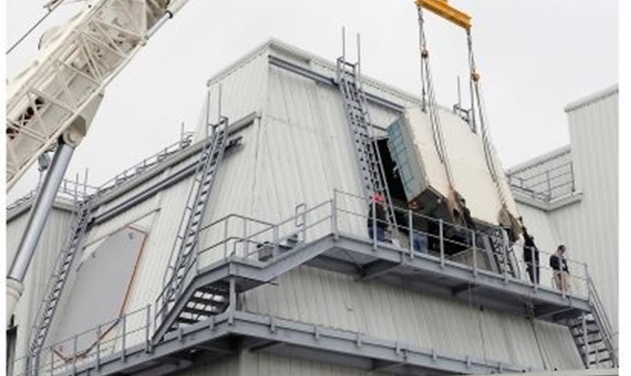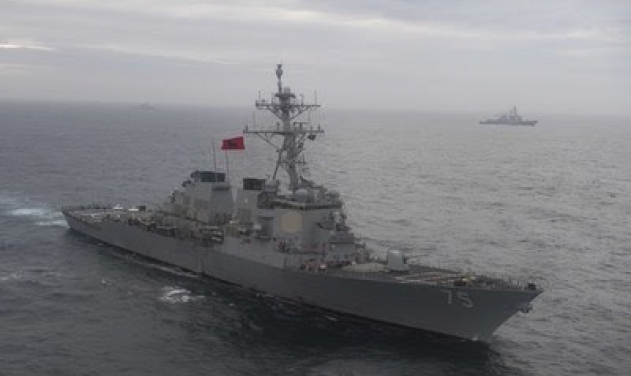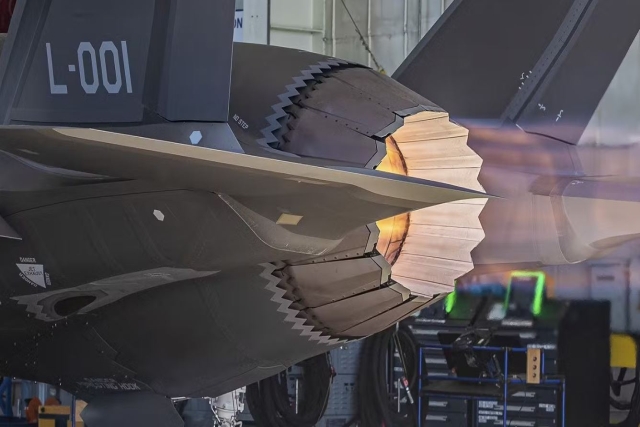US Refutes Russian Allegations of US Noncompliance with INF Treaty

The US state department has refuted allegation of US non-compliance with the Intermediate-range Nuclear Forces treaty alleging Russia of refusing to engage in any serious discussion of US concerns on existence of a prohibited missile system with Russia.
The Russian Federation has sought to deflect US concerns by accusing the United States of being the party in violation of the INF Treaty, the state department stated in a Bureau of Arms Control, Verification and Compliance Factsheet published last Friday.
The Russian Federation has raised three areas of concern regarding US compliance with its obligations: the Aegis Ashore Ballistic Missile Defense system; ballistic target missiles; and armed unmanned aerial vehicles (UAVs).
“The United States has repeatedly engaged Russian officials in multiple venues including the Treaty’s Special Verification Commission (SVC), to explain why US actions in these areas are in compliance. The United States has consistently addressed the Russian Federation’s questions in a transparent, substantive, and constructive manner,” the factsheet stated.
The Aegis Ashore missile defense system is in consistency with the US obligations under the INF treaty. The system is only capable of launching defensive interceptor missiles, (SM-3) that has been developed and tested solely to intercept and counter objects not located on the surface of the Earth, the statement read.
Under paragraph 3 of Article VII of the INF Treaty, an interceptor missile of this type is not a missile subject to the INF Treaty.
The Aegis Ashore Missile Defense System does not have an offensive ground-launched ballistic or cruise missile capability. Specifically, the system lacks the software, fire control hardware, support equipment, and other infrastructure needed to launch offensive ballistic or cruise missiles such as the Tomahawk. Moreover, the defensive nature of the Aegis Ashore sites is documented in US basing agreements with the host nations of Romania and Poland.
Although it utilizes some of the same structural components as the sea-based Mk-41 Vertical Launch System installed on ships, the Aegis Ashore vertical launching system is not the same launcher as the sea-based MK-41 Vertical Launch System.
Aegis Ashore has never contained, launched, or been tested for launching a missile that is prohibited by the INF Treaty. As a result, the system is not a prohibited launcher.
Ballistic Target Missiles
The Russian Federation first raised concerns about US ballistic target missiles approximately 18 years ago. At that time, the United States addressed these concerns in great detail in the SVC.
The INF Treaty allows for the use of otherwise-prohibited booster systems for research and development purposes, including their use as targets for missile defense tests. Specifically, Paragraph 12 of Article VII provides that launches of booster systems shall NOT be considered to be flight-testing of INF Treaty-prohibited ballistic missiles, provided that certain conditions are met.
The stages used in the booster system must be existing types of booster stages as of June 1, 1988;
The stages used in the booster system must be different from stages used in the missiles that were originally listed in Article III of the INF Treaty—that is, the INF Treaty-range missiles that were in existence at the time the Treaty entered into force on June 1, 1988;
The booster systems being used must be used only for research and development purposes to test objects other than the booster systems themselves—in other words, the missile must not be used to test its own booster system;
The aggregate number of launchers for such booster systems must not exceed 35 for any Party at any given time; and,
These launchers must be fixed, above ground, and located only at declared research and development launch sites.
The United States has acted within these parameters for all activities relating to ballistic target missiles, and provided notification and documentation to the Russian Federation. The purpose of U.S. ballistic target missile launches is research and development of US missile defense systems, not the development of the target missiles themselves.
Armed Unmanned Aerial Vehicles
The Russian Federation first raised concerns about armed UAVs under the INF Treaty over 15 years ago in the INF Treaty’s Special Verification Commission (SVC). At that time, the United States addressed these concerns in great detail, explaining why US actions are fully consistent with the Treaty.
The INF Treaty poses no restrictions on the testing, production, or possession of two-way, reusable, armed UAVs. In the U.S. view, the term “missile” as used in the Treaty applies to one-way systems.
The United States employs a number of armed versions of UAVs, including the Hunter, Shadow, Predator, Gray Eagle, and Reaper UAVs. All of these are two-way, reusable systems and, as a result, are not subject to the INF Treaty.
Moreover, Russian firms have pursued the development of armed UAVs for years and it is our understanding that the Russian Federation has also supported the development of armed UAVs.













